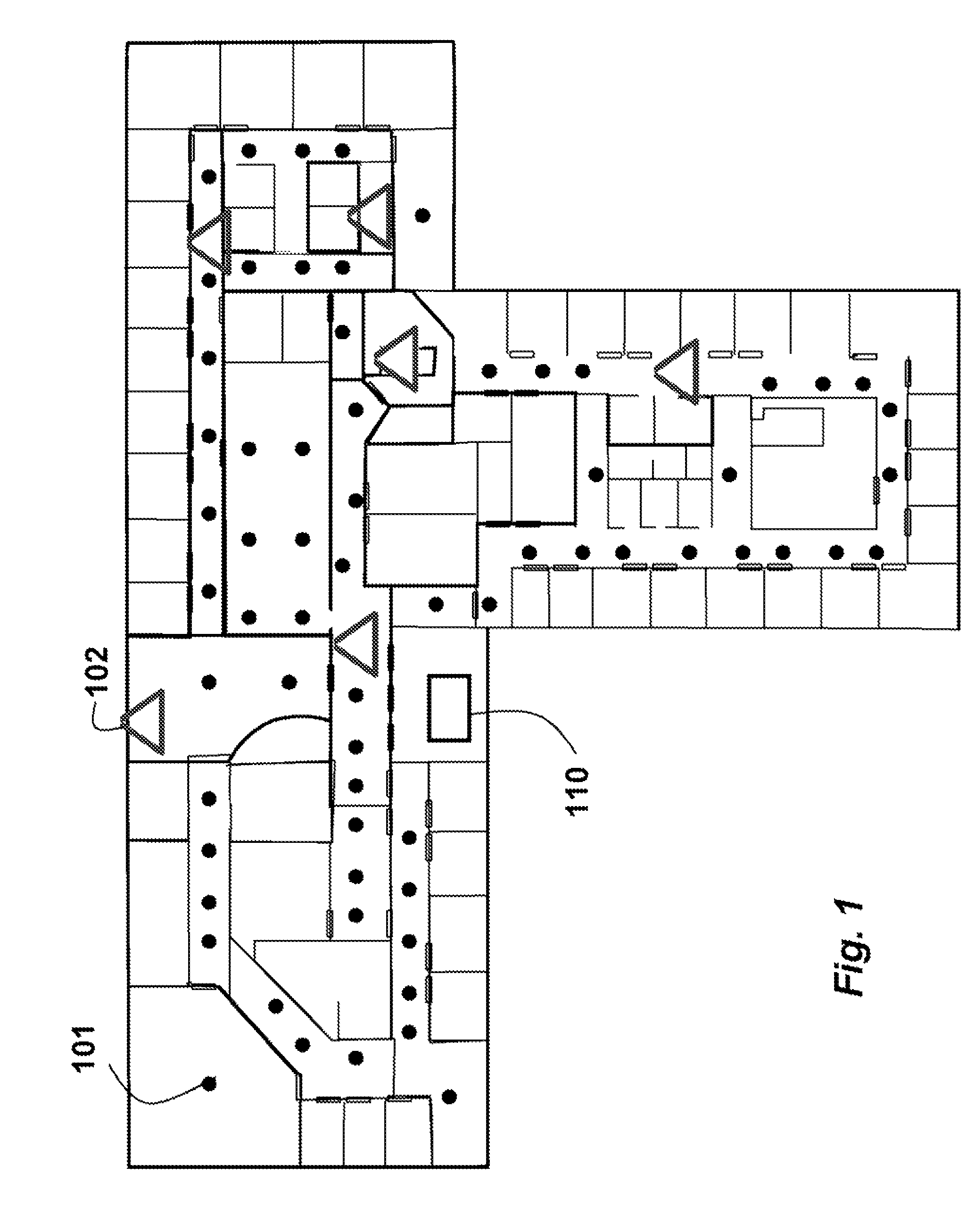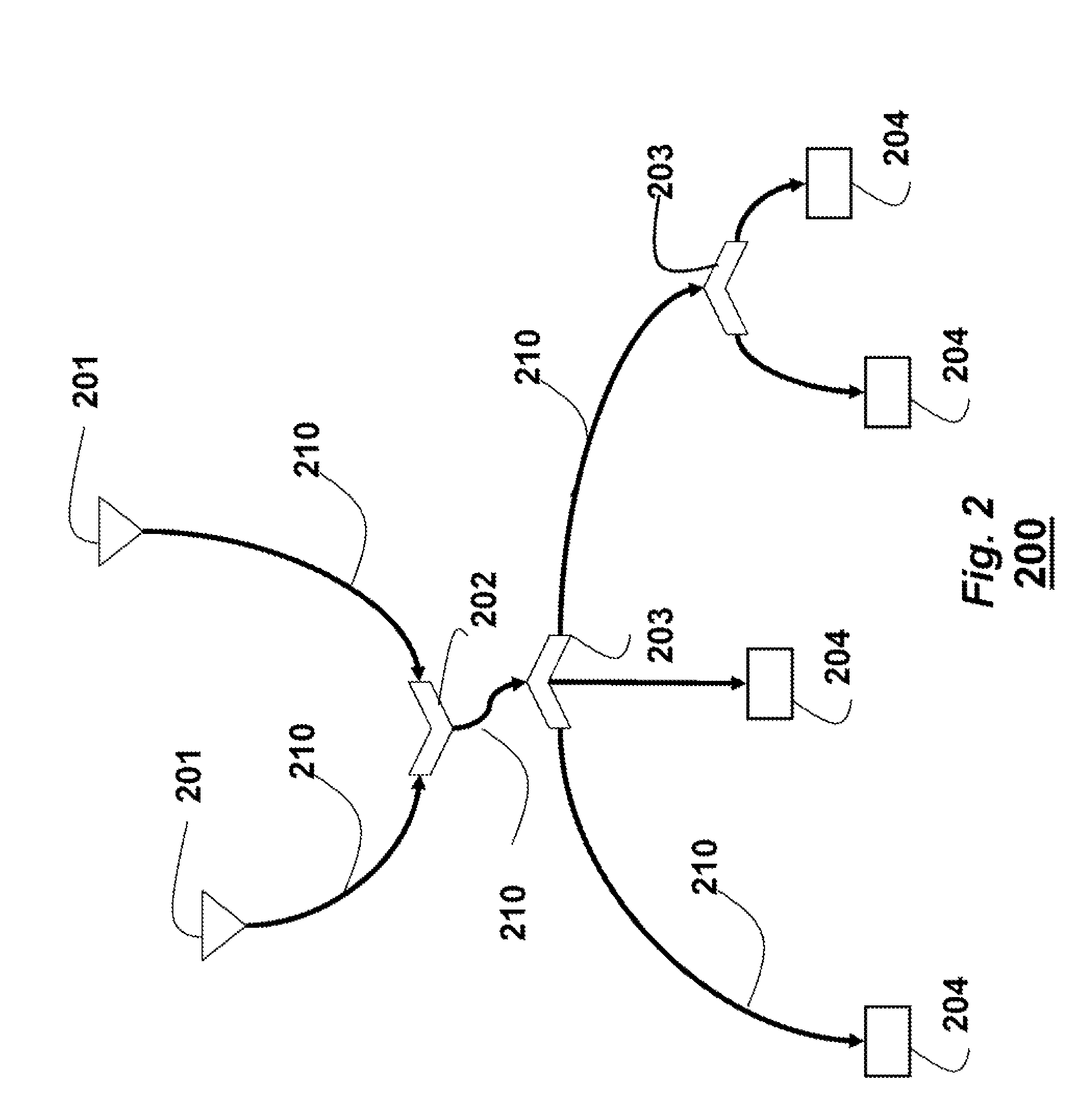System and method for modeling movement of objects using probabilistic graphs obtained from surveillance data
a technology of probabilistic graphs and surveillance data, applied in the field of surveillance systems and object tracking methods, can solve the problems of increasing the computational burden of the surveillance system, the inability to observe objects with cameras, and the inability to use conventional surveillance systems. to achieve the effect of eliminating all ambiguities
- Summary
- Abstract
- Description
- Claims
- Application Information
AI Technical Summary
Benefits of technology
Problems solved by technology
Method used
Image
Examples
Embodiment Construction
[0020]Surveillance System
[0021]As shown in FIG. 1, a surveillance system in which, a tracking module is implemented according to the embodiments of our invention includes a relatively large set of wireless network of sensors (dots) 101 and relatively small set of pan-tilt-zoom (PTZ) cameras (triangles) 102. The ratio of sensors to cameras can be very large, e.g., 30:1, or larger.
[0022]Sensors
[0023]The sensors can be motion sensors, and door, elevator, heat, pressure and acoustic sensors. Motion sensors, such as infra red sensors, can detect the movement of objects in a vicinity of the sensor. Door sensors can detect door opening and closing events, typically indicative of a person passing through the doorway. Elevator sensors can similarly indicate the arrival or departure of people in an environment. Acoustic sensors, e.g., transducers and microphones, can also detect activity in an area. Sensors can be mounted on light switches, or power switches of office equipment in the environ...
PUM
 Login to View More
Login to View More Abstract
Description
Claims
Application Information
 Login to View More
Login to View More - R&D
- Intellectual Property
- Life Sciences
- Materials
- Tech Scout
- Unparalleled Data Quality
- Higher Quality Content
- 60% Fewer Hallucinations
Browse by: Latest US Patents, China's latest patents, Technical Efficacy Thesaurus, Application Domain, Technology Topic, Popular Technical Reports.
© 2025 PatSnap. All rights reserved.Legal|Privacy policy|Modern Slavery Act Transparency Statement|Sitemap|About US| Contact US: help@patsnap.com



